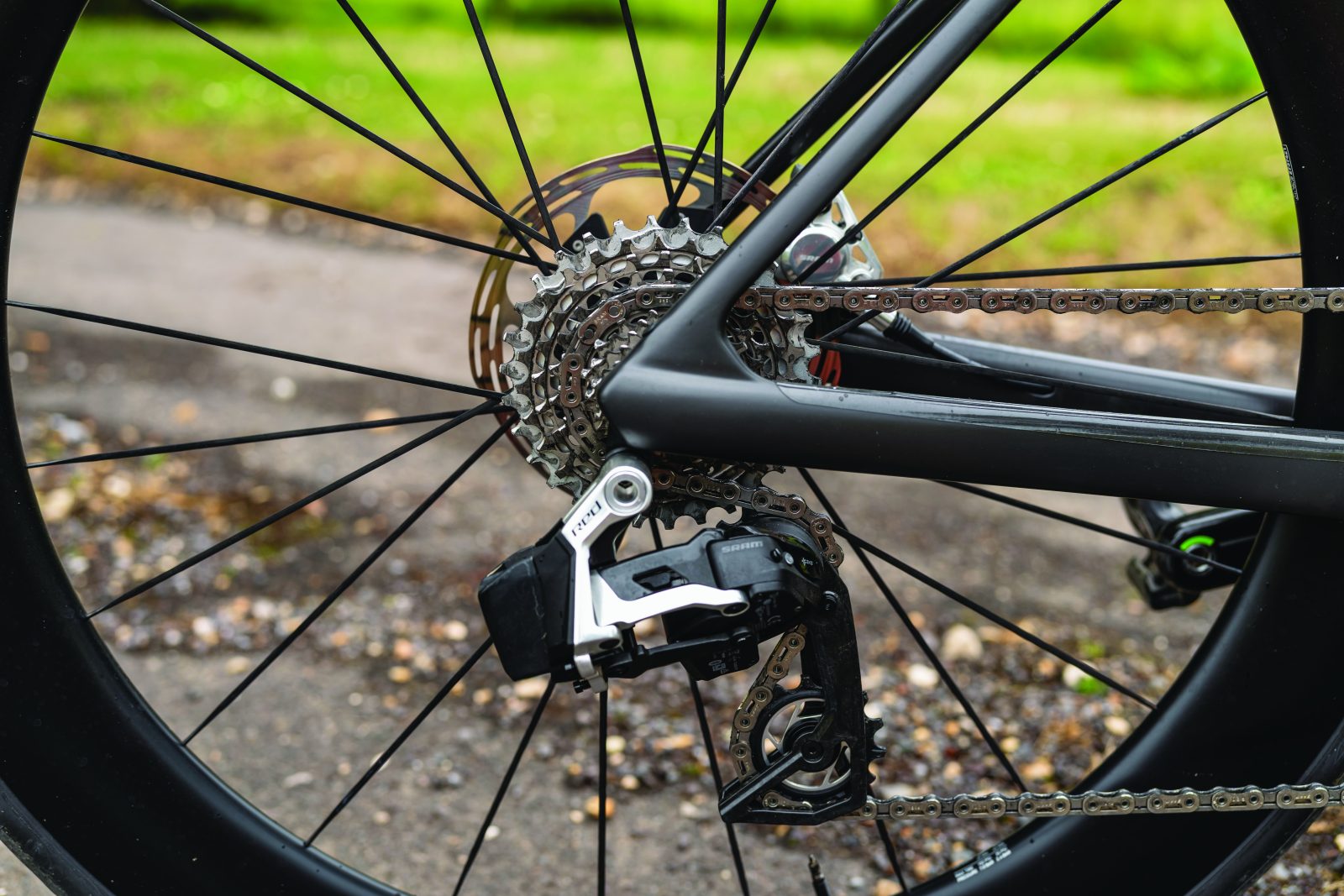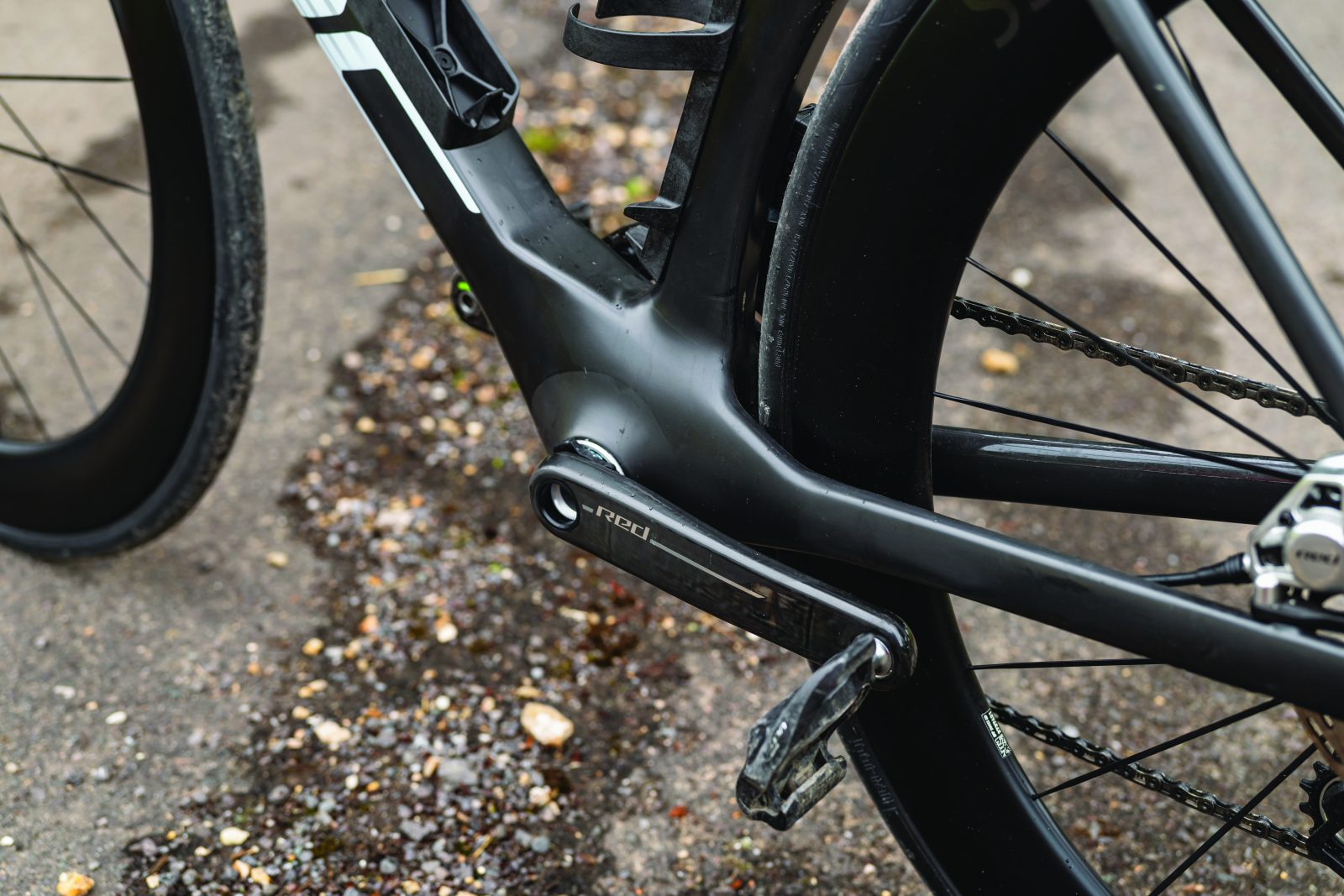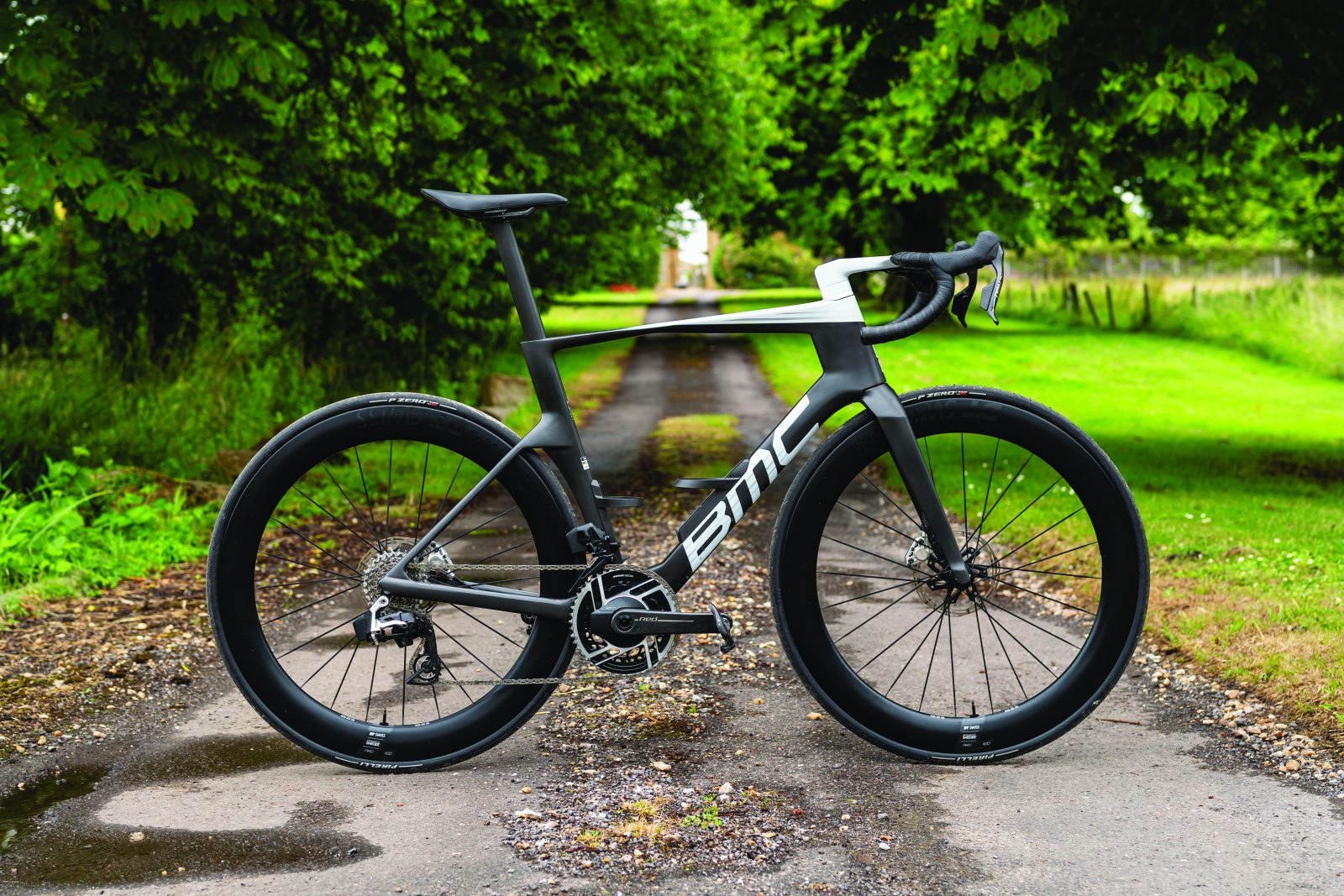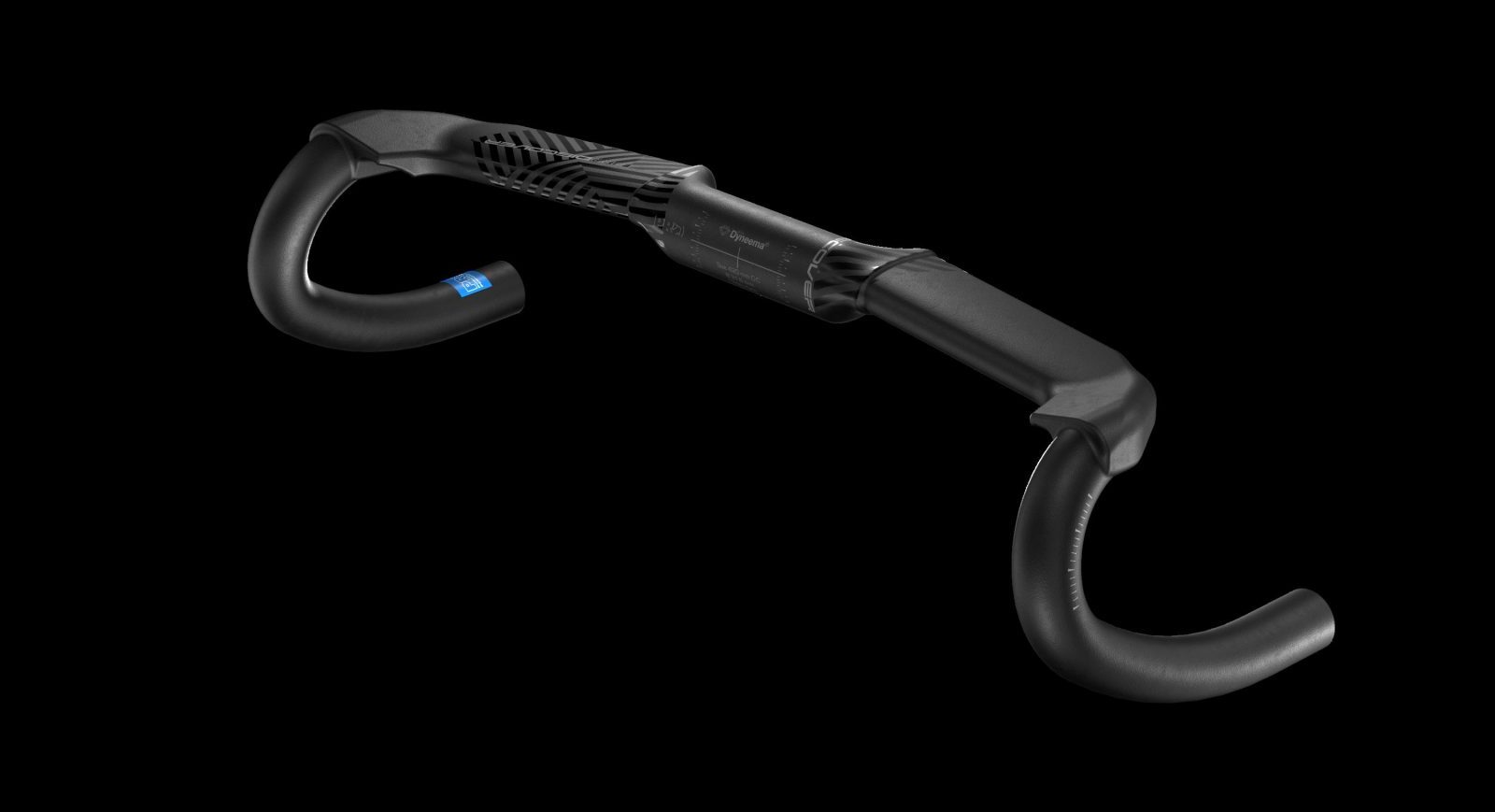The perfect modern race bike in every way, with one caveat for non-racers.

Words Sam Challis Photography Lizzie Crabb
Formula 1 and the bike industry have closer ties than you might assume. Specialized has worked with McLaren, J.Laverack makes the .1R with Aston Martin, and BMC has long been involved with Red Bull, or more specifically Red Bull Advanced Technologies (RBAT), its engineering consultancy division. BMC’s latest bike, the Teammachine R, is the result of the two companies’ most extensive collaboration yet.
BMC isn’t short of engineering experience itself but, given the scale of the operation, RBAT could bring a level of resources – analysis software, facilities and engineering manpower – to bear that would be financially impossible for BMC to obtain on its own. ‘They are also outside of the bike industry so can approach problems with a fresh perspective,’ says Stefan Christ, BMC’s head of R&D.
The bicycle manufacturer set some pretty stringent objectives: the new bike had to be faster than BMC’s previous aero bike, the Timemachine Road, and stiffer than the Teammachine SLR 01, but had to do it while staying within 50g of that bike’s weight. Otherwise, though, RBAT was given free rein, and its influence appears to be substantial because the result, visually at least, is something decidedly un-BMC.
The Teammachine R is a lot more angular and finessed than the collection of clean lines that have characterised BMC bikes for the last decade and more. There’s a sense that this new Teammachine has been sculpted by the wind itself, although Christ is reticent to label it an aero bike. ‘Aero bikes often concede weight and handling performance,’ he says. ‘Our new bike does neither; it’s our definition of the best all-round race bike.‘

From the front
The bike’s leading edge, being responsible for the bulk of its aero performance, provides the starkest example of RBAT’s impact. The fork has a flared, shallow crown that tapers into wide-stance legs. Despite acres of space either side of the wheel to allow turbulent air to flow through, the crown presses low over the top of the tyre, so clearance is limited to 30mm tyres.
The head tube is a similar departure from BMC’s usual design language, moving to a heavily waisted profile that extends rearward significantly.‘This was where RBAT earnt its keep,’ says Christ. ‘Within the frameset dimensions, a huge amount of work went into composite layup research – reducing overlap, optimising placement angles and fibre type usage – to ensure our stiffness and weight targets could still be met despite the move away from our proven design rationales. The Teammachine R is made from 350 carbon plies and takes our staff four hours just to assemble in the moulds.’
The ‘Mariana’ bottom bracket junction – ‘so deep we named it after the trench’, Christ says – links the tubes in webbing-like fashion, creating a massive cross section thanks to BMC standing by the now-unfashionable BB86 standard. There’s even a little fairing-like nubbin that extends off the bottom of the junction to help guide air across the lower portion of the rear wheel. There isn’t much RBAT hasn’t thought of to make this bike fast.
That said, for all the original features the collaboration introduced, BMC was still able to incorporate certain elements of its own creation, such as the Aerocore bottle cages that smooth the transition between tube and bottle, plus the narrow ICS Aero cockpit debuted on the brand’s fantastic Kaius gravel bike.
Interestingly, the cockpit is available in just one width (36cm at the hoods, with flared drops) to encourage a body position aggressive enough to support the premise of the frameset. However, it is at least available in stem lengths from 80mm up to 140mm, and BMC will work with dealers to ensure the correct length is built onto the customer’s bike.
The seatpost is a picture-perfect kamm-tail in cross-section, with Christ saying it was made as light and thin as possible while still being able to accommodate a Shimano Di2 battery. The wheel/tyre combination is similarly aero-focused. DT Swiss’s ARC 1100s are proven stiff and fast but their 20mm internal width is on the narrow side for such a modern bike. Correspondingly (because tyres must pair appropriately with rim width) the Pirelli P-Zero Race TLR SL tyres promise low rolling resistance and good grip but are limited to 26mm in size.
‘We optimised for 26 to 28mm tyres,’ says Christ. ‘We sell with 26mm because that’s what the DT wheels are designed around, but our racing team is on 28mm. Above 28mm wide tyres we started to see compromises in aero performance.’

Setting out boundaries
RBAT may have approached the Teammachine R’s design with no preconceived notions, but strict guidance was necessary in some areas to provide the ride characteristics BMC wanted. ‘Geometry was one of the only areas that wasn’t up for debate,’ says Christ. ‘The Teammachine R is basically identical to the SLR because we’ve refined geometry over the years.’
That means fit geometry on a size 56 is based around a racy but not extreme stack and reach of 563mm and 393mm respectively (about average for a bike in this category) but combined with more idiosyncratic handling geometry. BMC pairs a 72.3° head tube angle with 43mm of fork offset, which combined with 26mm tyres creates a trail of 63mm – quite long for a race bike.
A set of 410mm chainstays contributes to a wheelbase 1mm shy of a metre. As such, both trail and wheelbase are long in comparison to rivals, suggesting the Teammachine R, despite being aggressive in most other respects, should handle fairly conservatively. ‘A twitchy bike will feel faster but won’t necessarily give its rider the confidence to actually go faster,’ says Christ.
I was able to test his thinking throughout the test period. Sure enough, manoeuvring through traffic on urban roads was a subdued experience versus a bike with tighter geometry, which generally feels more lively in the same setting. However, once onto quieter roads and up to speed, the Teammachine R’s stretched out handling made it stable and afforded plenty of confidence on twisting descents, despite the narrow tyres.
A rarer attribute that I picked up on was the bike’s performance when getting to those descents in the first place. It seems to float up the draggy climbs that I generally dread. You know the ones: middling in both length and gradient, where no matter how good your legs are that day, you just feel slow. Not steep enough for a lightweight bike to make its presence known, but not shallow enough for there to be any tangible sense of help from an aero bike. The Teammachine R’s superbly balanced combination of both light weight and aero qualities came into their own in such situations.

No free lunch
While false flats are the Teammachine R’s bread and butter, I doubt it gives up much ground to full-blown aero bikes elsewhere either, but I would say it owes much of that speed to its narrow bars. I liked the ICS Aerocockpit on the brand’s Kaius gravel bike but think their application here is even more appropriate. The flattened tops are not so elongated that they aren’t comfortable to hold, and their drops are nicely compact, with a little flare for extra width as an antidote to the narrow hoods position.
On a road race bike as opposed to a gravel bike, they are reminiscent of the Trek Madone’s bar shape in that they encourage the rider to tuck in and down, significantly decreasing frontal area. For all its collaboration with Red Bull and tuned tube profiles, this one feature is probably the most effective aero trick the Teammachine R possesses. Narrow but ergonomic bars are anything but ubiquitous on stock bikes, so BMC still deserves great credit for pulling it off.
While the Teammachine R has a similar ride position to the Madone and a similar sense of ease at achieving and maintaining high speeds, I would say the extreme architecture of the Madone’s back end, with its cantilevered seat tube, produces more comfort. Tellingly, BMC makes no comfort claims about the Teammachine R, and indeed the bike’s ride quality had me feeling particularly attuned to the road surface, to put it politely.
The stock-supplied tyres might be suitable for road racers on smooth courses (although, as Christ says, even the BMC-sponsored Tudor Pro Cycling team uses 28mm tyres), but for normal riders on typical road surfaces they simply aren’t the best or fastest option. I appreciate the bike is aimed at racers, but I would have preferred BMC to spec wider tyres as standard so the rider gets a more practical tyre initially and can size down if they want to. Perhaps my perspective in this area indicates that the Teammachine R, despite how much I enjoyed riding it generally, isn’t the bike for me.
I’m no racer, after all, and Christ confirms this isn’t a bike for everyone.‘Some enthusiasts may find the Teammachine R a bit harsh,’ he says. ‘It’s the reason we introduced this alongside the SLR, instead of replacing it.’
And if, like me, more tyre clearance is your thing, BMC’s recently remodelled Roadmachine has it by the bucketful, ensuring there should be a road bike for everyone in the Swiss brand’s range. Provided you’ve got deep pockets, of course.
THE SPEC
Model: BMC Teammachine R 01 One
Price: $18,999
Weight: 7kg (size 56)
Groupset: Sram Red AXS
Wheels: DT Swiss ARC 1100 Dicut DB
Finishing kit: BMC ICS Carbon Aero cockpit, BMC Teammachine R 01 Premium Carbon seatpost, Fizik Argo Vento R1 saddle, Pirelli P-Zero Race TLR SL 26mm tyres
Contact: bmc-switzerland.com



